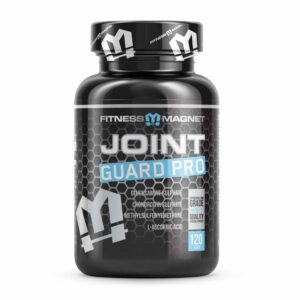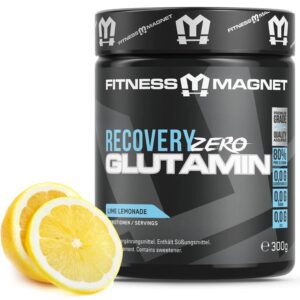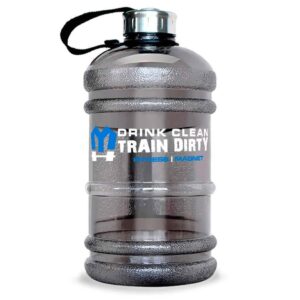1. Wie lange sollte mein Workout dauern?
Die Länge eines Workouts hängt von verschiedenen Faktoren ab. Ein intensives Krafttraining kann zwischen 45 Minuten und zwei Stunden dauern. Wenn du Muskelaufbau betreiben willst, dann sollte es nicht der Sinn deines Trainingsprogrammes sein, den Herzmuskel total zu erschöpfen, sondern das Muskelgewebe durch das Heben von schweren Gewichten zu stärken. Die durchschnittliche Regenerationszeit zwischen den einzelnen Sätzen sollte bei ein bis zwei Minuten liegen, damit sich die Muskeln wieder mit Sauerstoff auffüllen können. Wenn du Fett verbrennen willst, solltest du in dein Trainingsprogramm Supersätze einbauen. Achte darauf, dass du nur kurze Pausen von 30 bis 45 Sekunden zwischen den einzelnen Sätzen einlegst.
2. Kann ich die Bauchmuskeln jeden Tag trainieren?
Die Bauchmuskulatur sollte nicht jeden Tag trainiert werden, da der Rumpf und die dazugehörige Muskulatur dauernd bewegt und somit auch immer trainiert wird. Jede Übung in einem intensiven Krafttraining trainiert automatisch auch die Bauchmuskulatur mit, so dass ein tägliches separates Training für die Abs unnötig wird. Zudem kann ein Übertraining der Bauchmuskulatur Verletzungen im Muskelgewebe hervorrufen, die sehr schmerzhaft sein können.
3. Wie oft sollte ich meine Ausdauer trainieren?
Ein intensives Ausdauertraining sollte alle zwei Tage ausgeführt werden. Wichtig sind die Regenerationstage zwischen den einzelnen Trainingseinheiten. Du solltest aber den Unterschied zwischen Cardio und Fettverbrennung verstehen. Ein Cardiotraining wird oft als Training für die Fettverbrennung definiert. Das Cardio dient aber hauptsächlich zur Stärkung des Herzmuskels, damit der Athlet sein Leistungslevel langfristig erhöhen kann. Das Training für die Fettverbrennung besteht dagegen aus kurzen intensiven Intervallen, die den Fettstoffwechsel ankurbeln sollen.
4. Was versteht man unter einem Regenerationstag?
Unter einem Regenerationstag sollte jeder Sportler einen Tag verstehen, der ohne Trainingseinheit besteht. Wenn du deinem Körper keine Ruhephasen gönnst, kann ein sogenanntes Übertraining- Syndrom entstehen. Dies kann dann bewirken, dass dein Muskelwachstum stagniert, du verletzungsanfälliger wirst und langfristig an Kraft verlierst.
5. Ist es besser, Cardio vor oder nach dem Krafttraining auszuüben?
Cardio ist die ideale Trainingseinheit, damit die Muskulatur vor einem intensiven Krafttraining aufgewärmt werden kann. Ein zehn- bis maximal zwanzigminütiges Cardiotraining auf dem Laufband ist der empfehlenswerte Einstieg für das nachfolgende Gewichtheben. Cardio nach dem Krafttraining ist nicht zu empfehlen, da ein Krafttraining immer bis zur Leistungsgrenze ausgeübt werden sollte, damit ein nachhaltiger Erfolg in Kraft und Muskelaufbau erzielt werden kann. Wird zusätzlich noch der Herzmuskel nach dem Gewichtheben trainiert, kann ein Übertraining entstehen und somit schmerzhafte Verletzungen hervorgerufen werden.
6. Ist für den Trainingserfolg die Ernährung oder das Training wichtig?
Beide Komponenten sind wichtige Voraussetzungen für einen sportlichen Erfolg. Ohne eine ausgiebige Supplementierung kann kein intensives Training langfristig durchgehalten werden. Nur Protein essen genügt im Gegenzug aber nicht, damit die Muskeln wachsen. Wer im Kraftsport erfolgreich sein will, muss die ideale Balance zwischen Training und Ernährung finden. Da jeder Mensch einen unterschiedlichen Stoffwechsel besitzt, muss jeder Athlet selbst herausfinden, welche Dosis für ihn am Besten ist.
7. Wie trainiere ich einen flachen Bauch?
Ein flacher Bauch entsteht nicht ausschließlich durch Trainingseinheiten für die Bauchmuskulatur. Im Gegenteil! Wenn die Abs durchtrainiert sind, können sie sogar eine leichte Wölbung des Bauches hervorrufen. Ein flacher Bauch ist immer abhängig vom Fettgewebe, das sich um den Bauch angesammelt hat. Dieses Fett entscheidet über die Optik des Bauches und nicht die Intensität der Trainingseinheiten. Die Optik des Bauches kannst du deshalb durch deine Ernährung beeinflussen. Fettreiches Essen und wenig Bewegung bringen schnell einen runden Bauch zum Vorschein.
8. Was sollte ich nach dem Workout essen und warum?
Diese Frage sollte man auf Krafttraining und Ausdauertraining aufteilen. Es ist ein Mythos, wenn behauptet wird, dass du nach einem anstrengenden Krafttraining viel Kohlehydrate essen solltest, damit du wieder Energie bekommst. Zahlreiche Studien haben inzwischen nachgewiesen, dass die Einnahme von Whey Protein direkt nach dem Training den besten Erfolg für die Regeneration und den Muskelaufbau hervorrufen, da Whey Protein sofort über das Blut aufgenommen wird. Es kann somit schnell an wichtige Organe des Körpers verteilt werden. Bei einem Cardiotraining sollten dagegen die Glykogendepots sofort nach dem Training aufgefüllt werden. Hierfür eignet sich perfekt eine kohlehydratreiche Nahrung.
9. Warum ist auch nach mehreren Monaten Training kein Erfolg sichtbar?
Diese Frage stellt sich jedem Athleten nach einer bestimmte Zeit, wenn der Muskelaufbau beginnt zu stagnieren. Dieser „tote Punkt“ kann verschiedene Ursachen haben. Fast immer sind die Gründe fehlerhafte Trainingspläne, zu wenig Schlaf, eine minderwertige Supplementierung, falsche Ausführung der Übungen oder ein Übertraining, das durch zuviele Trainingseinheiten mit zuwenig Regenerationsphasen entstanden ist.
10. Warum nehmen viele Athleten und Kraftsportler Dopingmittel ein?
Bodybuilding und Kraftsport sind Sportarten, die stark auf das Aussehen des Körpers gerichtet sind. Oft haben viele Athleten nicht die Geduld und das Durchhaltevermögen, langfristig und diszipliniert ein intensives Trainingsprogramm durchzuhalten. Die Alternative sind dann illegale Dopingmittel, die ein schnelles Wachstum der Muskulatur fördern. Die schwerwiegenden Nebenwirkungen werden dabei in Kauf genommen, da nur der kurzfristige Erfolg zählt. Wer seinen Körper gesund trainieren will, sollte auf diese Substanzen gänzlich verzichten, da sie eine erhöhtes Leistungslevel nur kurzfristig vortäuschen.


